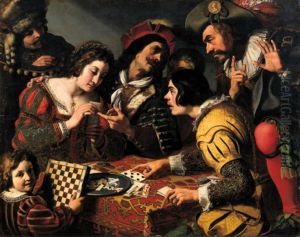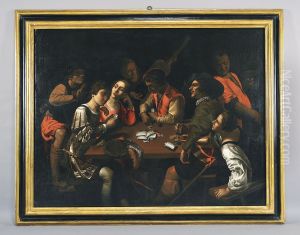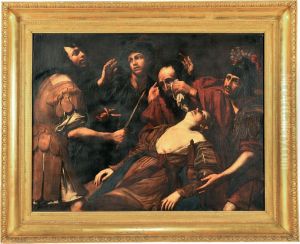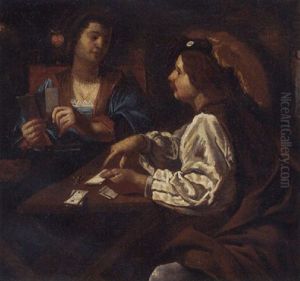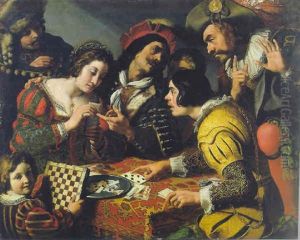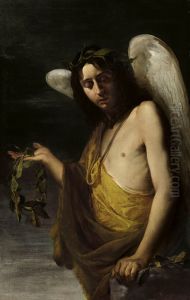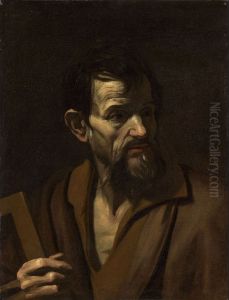Jean Ducamps Paintings
Jean Ducamps, a somewhat enigmatic figure in the realm of art history, hailed from the early 17th century. Details about his birth and death are sparse and shrouded in mystery, reflecting the limited documentation typical of many artists of his era. Despite the scarcity of personal details, Ducamps' artistic contributions provide a window into his talent and the stylistic tendencies of his time.
Jean Ducamps is often associated with the Caravaggisti, a group of artists who were profoundly influenced by the revolutionary painting techniques of Caravaggio. This influence is evident in Ducamps' use of dramatic chiaroscuro, a technique that plays with stark contrasts between light and dark, thereby adding a dramatic intensity to his compositions. His subjects, often drawn from religious narratives, mythology, and everyday life, are imbued with a sense of immediacy and emotional depth characteristic of Caravaggist painters.
Despite his apparent talents and contributions to the development of Baroque painting, Ducamps remains a peripheral figure in art historical scholarship. His works, while respected among connoisseurs and scholars of the Caravaggisti movement, have not achieved the widespread recognition of his contemporaries. This limited recognition could be attributed to the scant records of his life and the possible confusion with other artists of the time, a common issue in the study of 17th-century European art.
Nonetheless, the surviving works attributed to Jean Ducamps continue to be studied and appreciated for their technical skill and expressive power. They serve as testament to the rich, albeit often overlooked, tapestry of artists who contributed to the vibrant artistic milieu of early modern Europe. As research progresses, it is hoped that more light will be shed on the life and oeuvre of this elusive artist, providing a clearer understanding of his impact on the art of his time.
